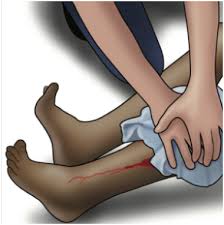5 Crucial Steps to Help an Accident Victim Before an Ambulance Arrives

Accidents can happen anytime, anywhere, and often leave bystanders feeling helpless or prompt them to take out their phones to film for social media.However, knowing the right steps to take can significantly improve the chances of survival and recovery for accident victims. Here are five crucial actions you can take to help an accident victim before professional medical help arrives:

1. Ensure Your Safety and the Victim’s Safety
Before rushing to assist, ensure the scene is safe for both you and the victim. Look for potential hazards such as traffic, fire, or unstable structures. If it’s a car accident, turn on your hazard lights and, if safe, set up warning triangles to alert other drivers. Never put yourself in danger, as this can lead to more casualties.

2. Call Emergency Services
Immediately dial emergency services and provide clear, concise information about the accident’s location, the number of people injured, and the nature of the injuries. Stay on the line and follow any instructions given by the dispatcher. This step is critical as it ensures that professional help is on the way while you assist the victim.
3. Assess the Victim’s Condition
Once the scene is safe, approach the victim carefully and check their condition. Look for signs of consciousness, breathing, and bleeding. If the victim is unconscious but breathing, position them into the recovery position to keep their airway open and prevent choking. If they are not breathing, prepare to administer CPR if you are trained to do so.

4. Stop Severe Bleeding
If the victim is bleeding profusely, it’s crucial to control the bleeding to prevent shock and further complications. Use a clean cloth, bandage, or even clothing to apply direct pressure to the wound. If the bleeding is from a limb, and if you are knowledgeable and trained, you can consider using a tourniquet above the wound site. However, improper use of a tourniquet can cause additional harm, so it should only be used as a last resort.
5. Provide Comfort and Reassurance
Stay with the victim and provide reassurance while waiting for the ambulance. Speak calmly and let them know that help is on the way. If possible, cover them with a blanket or coat to keep them warm and reduce the risk of shock. Avoid moving the victim unless they are in immediate danger (such as a burning vehicle or other hazards).
Additional Considerations
Do Not Move the Victim unless there is an imminent danger, do not move the accident victim, especially if you suspect spinal injuries. Moving them can worsen their injuries. Keep the victim as still and comfortable as possible.
Stay Calm and Clear-Headed. Your calm demeanor can help reduce the victim’s anxiety and can make a significant difference in how well you can manage the situation. Clear thinking and composed actions are vital in such scenarios.
Use Basic First Aid Knowledge. Having basic first aid knowledge can be invaluable. Consider taking a certified first aid course to be better prepared for emergencies. Knowing how to perform CPR, dress wounds, and handle shock can make a life-saving difference.
In the critical moments following an accident, the actions taken by bystanders can significantly impact the outcome for the victim. By ensuring safety, calling emergency services, assessing the victim’s condition, controlling severe bleeding, and providing comfort, you can offer crucial support until professional help arrives. Remember, preparation and knowledge are key—consider taking a first aid course to enhance your ability to assist in emergencies effectively.
HEI’s main focus is to save lives, you can also donate to this course. At HEI all lives matter!


impressive
this will really help us as a nation of we all can take one or two lessons from this.
Everyone should know how to respond to accident
Nice writeup????
Insightful tips! Thank you.